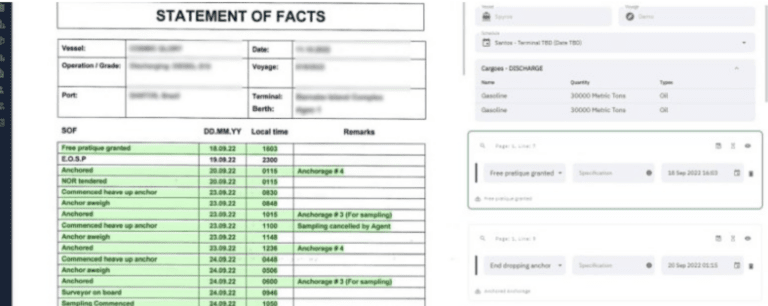

A Statement of Fact document is often divided in three parts:
A Header , which contains information such as the name of the vessel, the port location, and the issuing agents contact information; The Body , containing the detailed list of times and events; And the Footer , which may contain technical data, rain logs, stoppage times and reasons, and eventually the signatures from the stakeholders that are involved in this cargo transfer.

A Complete SoF Should Ideally Include:
Notice of Readiness: When the master alerts the port and/or terminal that the ship is in place at the port and available to receive or dispatch her cargo.
Time of Arrival and Departure: The exact times of when the vessel arrives at the port and when it leaves. This will be later used in calculating laytime and processing demurrage.
Berthing Details: This includes when the vessel was berthed, and at which berth or terminal, providing clarity on the location and movement within the port.
Cargo Operations: Details of when loading or unloading commenced and when they were completed, a proxy of a terminal’s efficiency.
Weather Conditions: Weather plays a crucial role in maritime operations, and the SoF should document any stoppages or interruptions due to weather.
Other Relevant Events: Any other significant events or interruptions that might impact operations, cause delays, or impact the demurrage calculation are documented here.
Within the events that are logged into a Statement of Facts, three time frames emerge that are essential for both charterers and shipowners. These periods play a crucial role in assessing operational performance and efficiency, and can later be used to drive better voyage planning and commercial decisions: